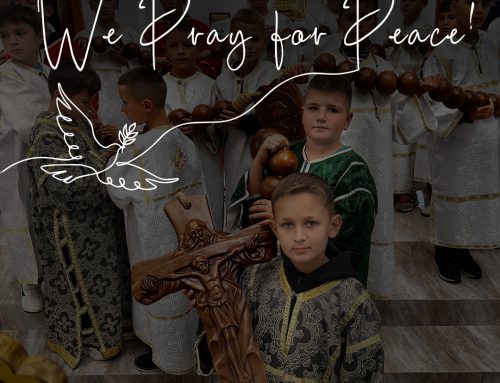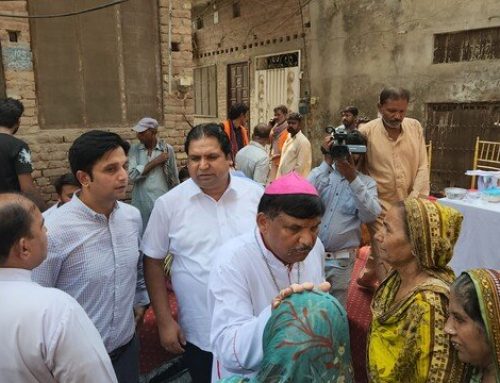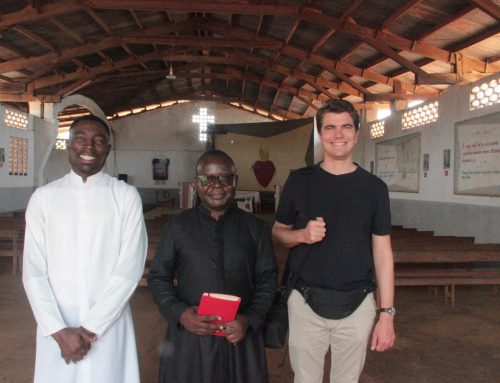JERUSALEM – Chapel of the Crucifixion regains its splendour
The Custody of the Holy Land has also finished the restoration of the interior decoration of the chapel of the Crucifixion, located in the Holy Sepulchre. The Church of the Holy Sepulchre is a church in the Christian Quarter of the Old City of Jerusalem that contains, according to traditions dating back to at least the fourth century, the two holiest sites in Christianity under one roof: the site where Jesus was crucified at a place known as “Calvary” or “Golgotha” and and Jesus’s empty tomb, where he is said to have been buried and resurrected. The tomb is enclosed by the 18th-century shrine, called the Aedicule.
As soon as you enter the Holy Sepulchre, to the right, two very steep stone steps ascend to the two chapels of Golgotha that are about five meters high above the level of the basilica. One is the chapel belonging to the Franciscans which commemorates the Crucifixion. The interior decoration and brightly coloured glass mosaics, which recall the medieval history of this place of prayer, have been restored. Where once you could see a ceiling stained by dust and burnt oil, you can now see a deep blue dotted with gold tiles. The so-called Crucifixion chapel, with its arches and domes filled with biblical symbols and figures from the Old and New Testaments and 12th century medallion that represents the Ascension, had already been restored in 2001.
The site of the basilica of the Holy Sepulchre which encloses the physical places of the crucifixion and resurrection of Jesus was discovered on the corner of the western forum of the city Aelia Capitolina, at the time of Hadrian, by St. Helena, the mother of Constantine, who built a huge basilica consecrated on Easter Sunday in 326AD.
On the outside, the basilica consists of a cluster of buildings and terraces, above which rise two domes, one greater than the other, and a truncated bell tower. The interior is configured as a complex labyrinth of altars and chapels, large and small, arranged at different levels connected by stairs.
Today, the wider complex serves as the headquarters of the Greek Orthodox Patriarch of Jerusalem and is the cathedral of the Latin Patriarchate of Jerusalem. Control of the church itself is shared between several Christian denominations in complicated arrangements essentially unchanged for over 160 years. These include Greek Orthodox, Armenian Orthodox and Roman Catholic, and to a lesser degree the Egyptian Copts, Syriacs and Ethiopians. For example, the place of the Crucifixion as well as the Holy Sepulchre as such is guarded by Orthodox Greeks, while the Armenians have the temple from which the Virgin Mary contemplated how her Son died and in a grotto, the Franciscans venerate the place where St. Helena discovered the Lord’s cross.
ACN Malta




